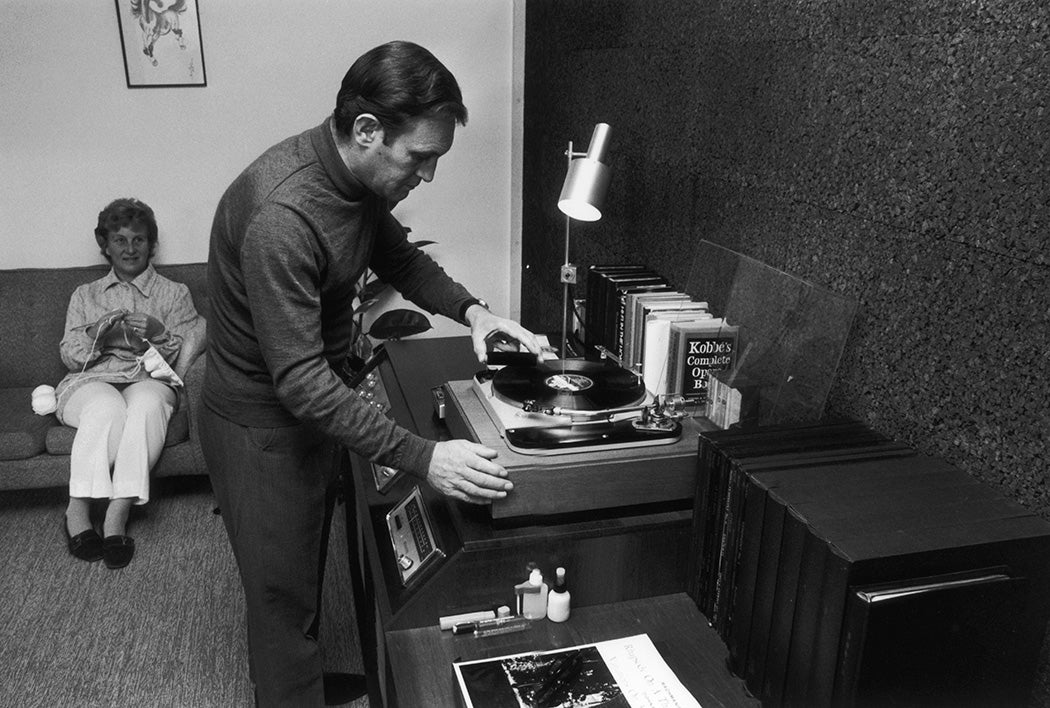According to the Recording Industry Association of America, a trade organization representing the music industry, 2022 was the first year that vinyl outsold CDs since 1988, and sales overall increased by 20 percent from the previous year. The resurgence could be part of an overall return to simplicity, as typewriters, ’90s-’00s-era digital cameras, and board games have also seen a spike. But it could also be something beyond nostalgic appeal.
As media studies scholar Roy Shuker found in his survey of record collectors, there’s no one reason that people are drawn to vinyl albums, but “the thrill of the obsession, linked to accumulation and completism; at times a preoccupation with rarity and economic value; and a concern for cultural preservation” are some of the most commonly shared ones. But for a hobby with so many reasons propelling it, there’s one stereotype about it that persists—that most record collectors are men. Most of Skuker’s respondents agreed that record collecting is seen as “largely a male activity.” And if that’s true, why?
The answer may be in how stereo equipment was marketed originally.
Before World War I, there was nothing inherently masculine about recorded music, explains cultural historian Keir Keightley. But by the 1960s, “home audio sound reproduction equipment had hardened into masculinist technologies par excellence.” The high-fidelity stereo, soon to be known as “the hi-fi,” had become popular with the introduction of the long-playing records (LPs) in 1948. And while LPs weren’t marketed as masculine, hi-fis were. As Keightley notes, a 1953 Life magazine article explains that “[o]ne of the strangest facts about both [hi-fi] bugs and audiophiles is that they are almost exclusively male…women seldom like hi fidelity.”
Audio equipment manufacturers weren’t doing anything to refute that premise. They capitalized on the trend by selling hi-fi DIY kits so that men could assemble their own stereos. This spurred the adoption of component systems, so that “even the man who was not electronically skilled could participate by selecting the various components (turntable, tuner, amp, speakers, etc.) of a system,” Keightley writes.
The ease of putting together your own system, coupled with the availability of LPs, meant that if you wanted to collect records, you were in paradise. By the early 1950s, audiophile culture could even support a number of specialty magazines like Audio Engineering and High Fidelity. It was becoming a distinct culture. But it also coincided with a change of American culture at large.
As some families moved to the suburbs in the 1950s, they were welcomed by a shift in architecture. While older houses had more segregated spaces, these new, modern homes emphasized “togetherness, particularly by reducing the number of separate rooms and opening up floorplans,” Keightley explains. There was no den for father, no place that a man could call his own. But there was something he could call his—the hi-fi.
Weekly Newsletter
Playboy, for example, positioned the hi-fi as the ultimate manly accessory, while humorist Barbara Diamond penned an article that served as “a ‘how-to’ coping guide for hi-fi wives.” This is something Shuker identifies with contemporary collectors as well: “Collecting can provide a sense of escapism and a private refuge from both the wider world and the immediate domestic environment, albeit temporarily.” The collection, the volume, the components—they’re all choices you get to make.
In addition, because hi-fis, and the accompanying records, took up so much space, the stereo system was also seen as a way for men to reclaim space in a “feminized” house. A 1958 article titled “The Womanization of America” connected the “decline of masculine domestic space to ‘feminine’ interior decoration and the rise of ‘open’ floorplans in the post-war years,” Keightley writes.
But women responded then, and they’re still responding now. One New York Times reporter wrote in 1956 that “men have ‘bulldozed’ the opposite sex into the belief that they cannot possibly understand the workings of this complicated equipment.” This belief echoes in today’s record collecting, with one of Shuker’s respondents noting that she often has to “prove” to other collectors that she likes music. It’s “frustrating and sad,” she reports.
Support JSTOR Daily! Join our new membership program on Patreon today.







